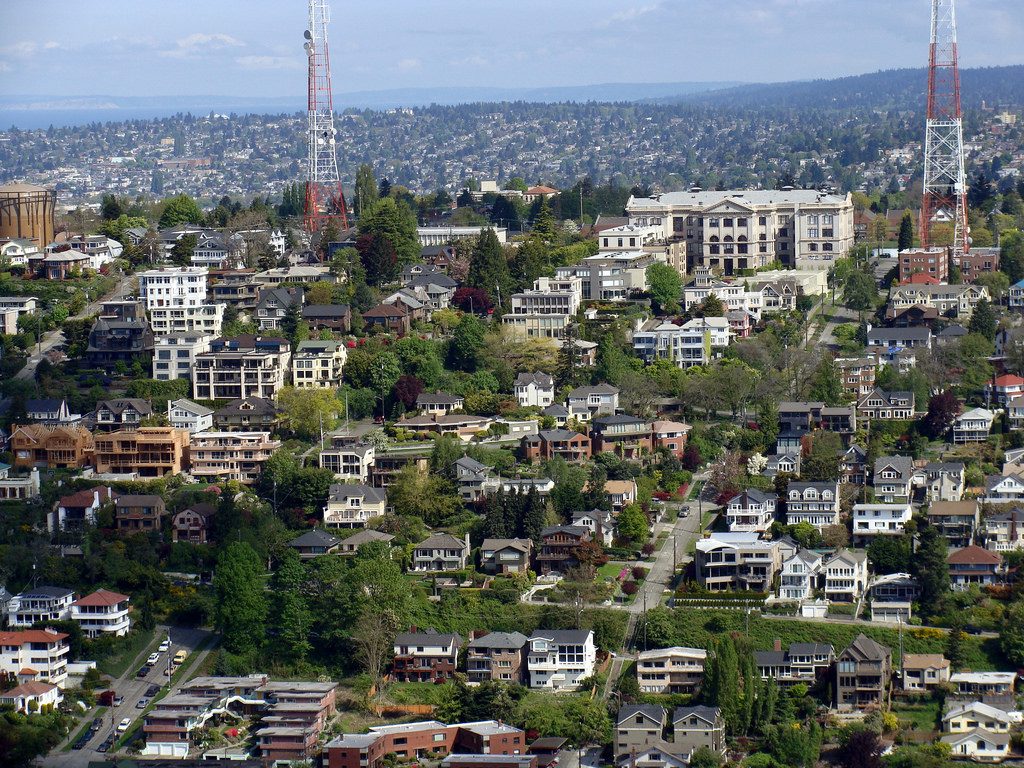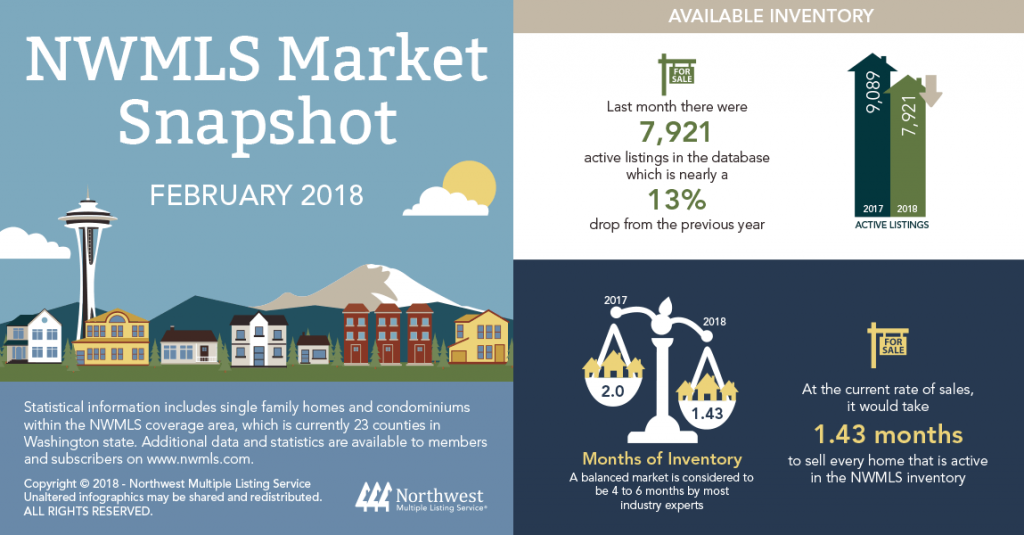
Image via Flickr
In the past two years we have seen spikes in home values in February due to the “cyclical low point in supply,” which brought prices up last month to last summer’s peak levels. According to the latest NWMLS Market Update, the median price of closed sales area-wide surged nearly 15 percent over the past year, from $335,515 to $385,000. Moreover, the overall number of pending sales was down 2.8 percent last month compared to February 2017, which is a likely consequence of inventory being down nearly 13 percent.
Snohomish County had the largest price increase of NWMLS’s four Puget Sound counties (King, Snohomish, Pierce & Kitsap) at 18.8 percent. Their median sale price rose from $387,250 a year ago to $460,000. Despite its rise, Snohomish County is still $130,000 below King County’s $590,000 median price for closed transactions last month.
In Seattle, the median price for single family homes reached $777,000 in February, $20,000 more than the record high set just a month before in January. On the Eastside, the median cost rose to $950,000, $12,000 more than the peak price from December. Three areas even surpassed a $1 million median for single family homes: Mercer Island, Bellevue (west of 405), and Kirkland-Bridle Trails.

Graphic via NWMLS
The high demand is continuing to tighten supply as there’s only 1.4 months of supply area-wide – both Snohomish and King County have less than a month’s supply. Area-wide, the condo supply down to 0.88 months – that number being even lower in King, Snohomish, and Kitsap counties. The median cost of a condo in Seattle is now $535,000, up $60,000 from a year ago, and the first time the median has exceeded half a million dollars.
Despite the low inventory, other key market indicators showed gains: new listings, closed sales, and selling prices. NWMLS also shared in their market update that at the current rate of sales, it would take 1.43 months to sell every home that is active in the NWMLS inventory.
Seattle’s job market is an obvious factor as it keeps outpacing almost every metro area in the country. With the number of new residents moving to the area we will continue to see a low inventory, but inventory levels should improve as we head into the spring and summer months.
